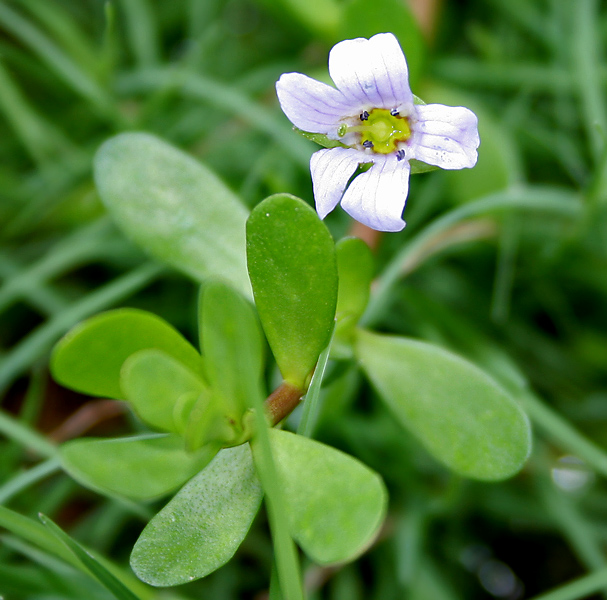|
Cymbalaria Pallida
''Cymbalaria pallida'' is a purple-flowered plant native only to mountainous parts of Italy. It belongs to the plantain family (Plantaginaceae). Description ''Cymbalaria pallida'' is a perennial plant, high, with a short, pubescent and prostrate-ascending stem and opposite, fleshy, kidney-shaped leaves. Calyx is densely hairy, with rounded lobes; corolla is wide, violet-lillac, with white center tinged with yellow and purple and ovate lobes in the lower petals. Spur is cylindrical, long. These plants bloom from June to August.Giovanni Galetti, Abruzzo in fiore, Edizioni Menabò - Cooperativa Majambiente, 2008 Distribution This species is endemic to Italy. It can be found in major mountain areas, mainly in the Apennines of Abruzzo Abruzzo (, ; ; , ''Abbrìzze'' or ''Abbrèzze'' ; ), historically also known as Abruzzi, is a Regions of Italy, region of Southern Italy with an area of 10,763 square km (4,156 sq mi) and a population of 1.3 million. It is divided into four . ... [...More Info...] [...Related Items...] OR: [Wikipedia] [Google] [Baidu] |
Plantaginaceae
Plantaginaceae, the plantain family or veronica family, is a large, diverse family (biology), family of flowering plants in the order Lamiales that includes common flowers such as Antirrhinum, snapdragon and Digitalis, foxglove. It is unrelated to the true plantains, banana-like fruit also called "plantain". In older classifications, Plantaginaceae was the only family of the order Plantaginales, but numerous phylogenetic studies, summarized by the Angiosperm Phylogeny Group, have demonstrated that this taxon should be included within Lamiales. Overview The plantain family as traditionally circumscribed consisted of only three genera: ''Bougueria'', ''Littorella'', and ''Plantago''. However phylogenetic research has indicated that Plantaginaceae ''sensu stricto'' (in the strict sense) were nested within Scrophulariaceae (but forming a group that did not include the type genus of that family, ''Scrophularia''). Although Veronicaceae (1782) is the oldest family name for this group, ... [...More Info...] [...Related Items...] OR: [Wikipedia] [Google] [Baidu] |
Endemism
Endemism is the state of a species being found only in a single defined geographic location, such as an island, state, nation, country or other defined zone; organisms that are indigenous to a place are not endemic to it if they are also found elsewhere. For example, the Cape sugarbird is found exclusively in southwestern South Africa and is therefore said to be ''endemic'' to that particular part of the world. An endemic species can also be referred to as an ''endemism'' or, in scientific literature, as an ''endemite''. Similarly, many species found in the Western ghats of India are examples of endemism. Endemism is an important concept in conservation biology for measuring biodiversity in a particular place and evaluating the risk of extinction for species. Endemism is also of interest in evolutionary biology, because it provides clues about how changes in the environment cause species to undergo range shifts (potentially expanding their range into a larger area or b ... [...More Info...] [...Related Items...] OR: [Wikipedia] [Google] [Baidu] |
Apennines
The Apennines or Apennine Mountains ( ; or Ἀπέννινον ὄρος; or – a singular with plural meaning; )Latin ''Apenninus'' (Greek or ) has the form of an adjective, which would be segmented ''Apenn-inus'', often used with nouns such as ("mountain") or Greek (), but ''Apenninus'' is just as often used alone as a noun. The ancient Greeks and Romans typically but not always used "mountain" in the singular to mean one or a range; thus, "the Apennine mountain" refers to the entire chain and is translated "the Apennine mountains". The ending can vary also by gender depending on the noun modified. The Italian singular refers to one of the constituent chains rather than to a single mountain, and the Italian plural refers to multiple chains rather than to multiple mountains. are a mountain range consisting of parallel smaller chains extending the length of peninsular Italy. In the northwest they join the Ligurian Alps at Altare. In the southwest they end at Reggio di ... [...More Info...] [...Related Items...] OR: [Wikipedia] [Google] [Baidu] |
Abruzzo
Abruzzo (, ; ; , ''Abbrìzze'' or ''Abbrèzze'' ; ), historically also known as Abruzzi, is a Regions of Italy, region of Southern Italy with an area of 10,763 square km (4,156 sq mi) and a population of 1.3 million. It is divided into four Provinces of Italy, provinces: Province of L'Aquila, L'Aquila, Province of Teramo, Teramo, Province of Pescara, Pescara, and Province of Chieti, Chieti. Its western border lies east of Rome. Abruzzo borders the region of Marche to the north, Lazio to the west and northwest, Molise to the south and the Adriatic Sea to the east. Geographically, Abruzzo is divided into a mountainous area in the west, which includes the highest massifs of the Apennines, such as the Gran Sasso d'Italia and the Maiella, and a coastal area in the east with beaches on the Adriatic Sea. Abruzzo is considered a region of Southern Italy in terms of its culture, language, economy, and history, though in terms of physical geography, it is often considered part of Cen ... [...More Info...] [...Related Items...] OR: [Wikipedia] [Google] [Baidu] |


